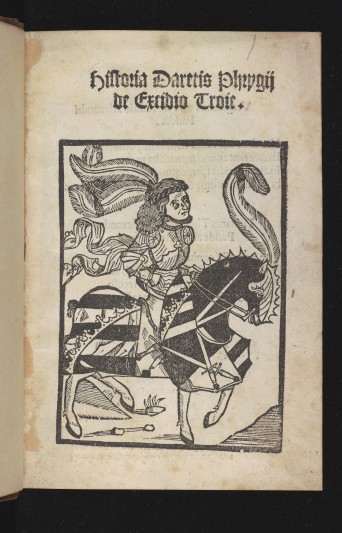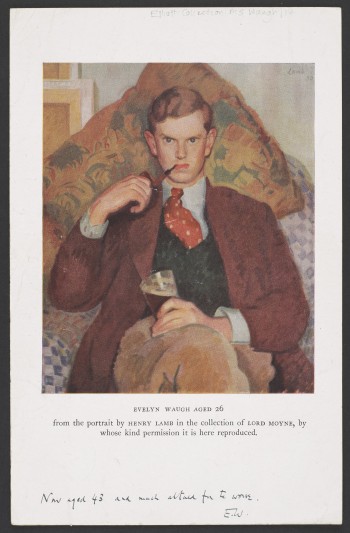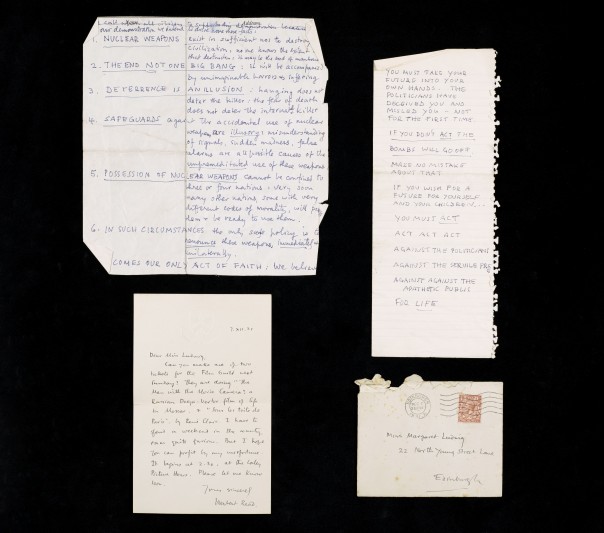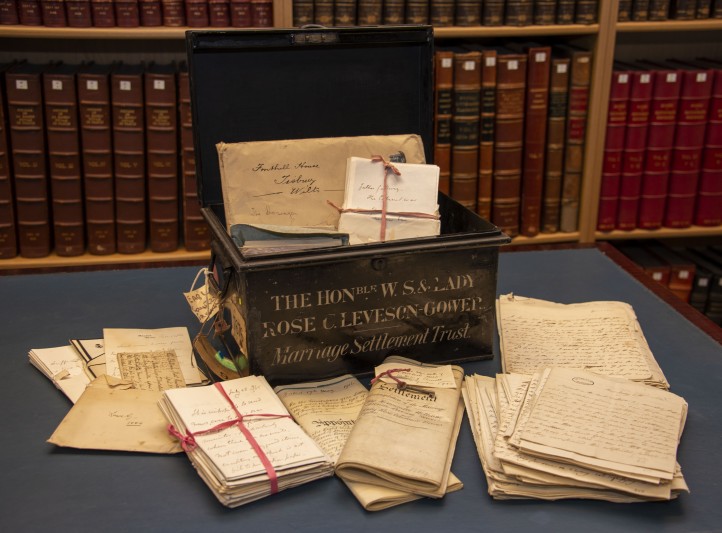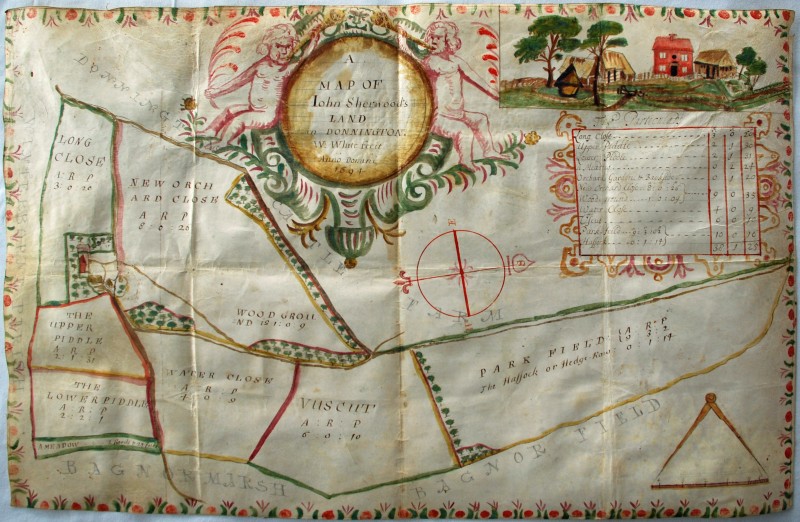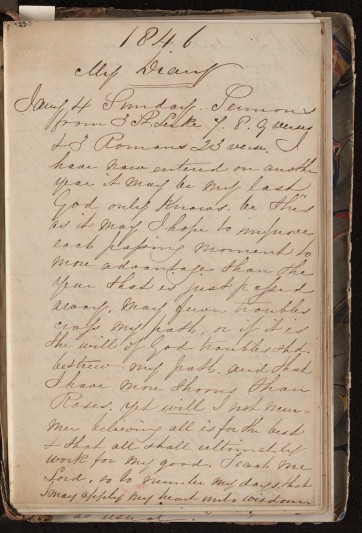Displaying 241 - 250 of 2051
Item date: Wittenberg: Joannes Viridimontanus [Johann Rhau-Grunenberg], 1512.
Date acquired: 2018
Grant Value: £6,000 [B H Breslauer Foundation Fund]
Item cost: £15,000
Institution: Cambridge University Library
Town/City: Cambridge
County: Cambridgeshire
An illustrated German post-incunable from the Macclesfield Library. This rare imprint by an otherwise prolific printer is an excellent complement to the University Library’s holdings of post-incunabula and works of Classical scholarship. It is only the third known copy, with an impeccable provenance.
Phrygius’ account was first put into print in Cologne prior to 1472 (two copies in the University Library) and a further eight editions were printed before 1500. Several editions were produced in Wittenberg in the early 16th century, firstly by the private press of Nicolaus Marschalk in 1502 (using the same woodcuts as here) and later by Grunenberg, though very few survive; only two other copies are known of the current edition, both in Germany. The Library has copies of four other pre-1550 editions of Phrygius, though none is illustrated.
Author: Evelyn Waugh
Item date: Christmas Day 1946
Date acquired: 2018
Grant Value: £5,000 [Philip Larkin Fund]
Item cost: £16,875
Institution: Leeds University, Brotherton Library
Town/City: Leeds
County: West Yorkshire
The letter concerns Duveen's translation of Vile Bodies and contains a potted autobiography of his life as well as an inscribed portrait after Henry Lamb. Les Editions de la Table Ronde, the Parisian publishing house founded by Roland Laudenbach, offered to publish a translation of Waugh’s second novel, Vile Bodies (1930). In the letter he offers explanations of unfamiliar English expressions in the text of the novel, explaining what a “chubb fuddler” is and that kedgeree is “an excellent luncheon or breakfast consisting of rice, eggs & salmon or haddock”.
Author: Herbert Read
Item date: c1900-1958
Date acquired: 2018
Grant Value: £10,000
Item cost: £20,000
Institution: Leeds University, Brotherton Library
Town/City: Leeds
County: West Yorkshire
Herbert Read studied at the University of Leeds, during which time his passion for art and literature flourished at the Leeds Arts Club. He went straight from the University to fight in World War I, emerging in 1918 as a decorated hero (DSO, MC), committed pacifist and published poet. His reputation as a poet and critic grew in post-war London, and he made lifelong friendships with leading writers, above all TS Eliot. As a curator at the Victoria and Albert Museum, he published widely, on literature, art history and the contemporary visual arts.
The papers acquired with the support of the Friends of National Libraries supplement and enrich the existing holdings of the Brotherton Library, extending the chronological scope of the collection. Significantly, this acquisition covers the Great War and the growth of the relationship between Herbert Read and Margaret Read (over a decade later), as well as documenting the close friendship with T S Elliot.
Item date: 18th and 19th centuries
Date acquired: 2018
Grant Value: £15,000
Item cost: Not disclosed.
Institution: British Library
Town/City: London
The archives of three generations of the Leveson-Gower family of Staffordshire (known collectively as The Granville Archive). The archive reflects the family’s pivotal role in eighteenth and nineteenth century politics and society and is of outstanding significance for the study and understanding of modern British history. Its coverage of foreign policy from the American War of Independence to the late-Victorian era, a period when Britain was at the height of its commercial and imperial power, is also extensive.
The papers reflect British politics and society in the late eighteenth century and contain important material relating to both the American War of Independence and the French Revolution.
Item date: Mid 18th century
Date acquired: 2018
Grant Value: £3,000
Item cost: £3,000
Institution: Bodleian Libraries
Town/City: Oxford
County: Oxfordshire
An interesting manuscript journal of three 18th-century journeys from Devon to London. They are unusually evocative of the age, and include among other things a visit to Oxford and the Bodleian Library and an encounter with a gentlemanly highwayman.
The diary comprises only 48 pages, but is packed with interesting observations. The author begins his journeys in the Plymouth area. The first journey to London began on 22 October 1755 and took in Portsmouth, Salisbury, Windsor. The diarist is highly opinionated - Woodgate is a “poor despicable place” and Stockbridge a “poor wretched Town”, though the people of Salisbury are the “most polite & genteel people of any in England (London only excepted)”. He reached London on 29 October.
In London the diarist attends church, plays (badly) at cards and spends time in coffee houses eating oysters and drinking wine. He visits St. Paul’s, Old London Bridge, and the lunatic asylums at Bedlam and neighbouring St. Luke's Hospital. On 7 November, near Acton, he and his travelling companion Colonel Carr were “robbed by a Genteel Highwayman, who behaved very civill, took from me my watch, & six shillings in money, a little surprized, but not at all afraid, if a family watch he told me I might hear of it again, at Amsterdam”. Later the diarist visited the Old Bailey and saw the trial of “the young highwayman ... there were 3 indictments against him, & each proved[;] very evidently he was acquitted”. On 15 November he went to “see his Majesty go to the houses [of Parliament], a very august, & solemn sight”. There follows an interesting impression of Westminster Hall with the Commons and Lords, the courts and coffee houses.
Author: Voltaire
Item date: 1728
Date acquired: 2018
Grant Value: £6,000 [B H Breslauer Foundation Fund]
Item cost: £13,000
Institution: Bodleian Libraries
Town/City: Oxford
County: Oxfordshire
A unique copy of Voltaire’s epic French poem in ten cantos written in alexandrine couplets, bound with a previously unknown letter from Voltaire to Queen Caroline.
This copy of the “fourth” London edition of 1728 is unrecorded and includes a three-page letter in Voltaire’s hand dated 25 April 1728 presenting it to Caroline of Brandenburg-Ansbach, Queen of Great Britain and Ireland, formerly the Princess of Wales. Although he mentions waiting until the fourth edition – “plus correcte et plus épurée” - to send a copy to the Queen he had in fact already written to present a first edition just ten days earlier (the book and letter are now housed in a library in Germany). Somewhat intriguingly Voltaire’s letter is at the back of the book and is bound-in upside down, posing a question as to whether the volume was ever sent.
Item date: 1694 and 1802
Date acquired: 2018
Grant Value: £450
Item cost: £950
Institution: Royal Berkshire Archives (formerly Berks Record Office)
Town/City: Reading
County: Berkshire
These two previously unknown items were listed on eBay in November 2018. The seller’s memory was that they had come from a house clearance about 20 years ago.
Both relate to the tithing of Winterbourne, which is in the ancient Berkshire parish of Chieveley. The map is titled as showing ‘John Sherwood’s land in Donnington’, although the property was actually situated in the south of Winterbourne tithing, adjacent to Donnington Castle. It was drawn by William White, is hand-coloured on vellum and measures 545mm x 345mm. It is a particularly fine example of a late-17th century small estate map, showing field names and acreages beside an accompanying schedule, together with a charming insert showing the main house and surrounding farm buildings. The Berkshire Record Office holds no other records relating to this estate and the map almost certainly provides the only evidence for most of the field names marked upon it, as most are not recorded in the Place Names of Berkshire.
Author: Arthur Brooke Faulkner
Item date: 1837
Date acquired: 2018
Grant Value: £3,100 [Smaller Libraries Fund]
Item cost: £4,850
Institution: Beckford's Tower Trust
Town/City: Bath
County: Somerset
Books once owned by William Beckford reveal key information about his interests and collecting habits and this information is enhanced when volumes contain Beckford’s own annotations and notes. Such notes are often references to the text and Beckford’s opinion on it, as is the case for pencil notes made by him on the end papers and rear of the title page of this volume. What makes this volume even more significant however, is the inclusion of a pencil sketch by Beckford for furniture, dated 26 September 1837 on the rear pastedown.
Bound in its original card covers, the book was published in early 1837 and the dated sketch proves that Beckford purchased and read the work not long after its publication. The content of the volume provides a good reasoning behind this. Framed as letters to Lord Brougham, the work records Faulkner’s travels in countries that Beckford had extensive knowledge of and had also himself published recollections of in his 1834 work Italy, with Sketches of Spain and Portugal.
Author: George Elmer
Item date: 1846
Date acquired: 2017
Grant Value: £1,000
Item cost: £1,500
Institution: West Sussex Record Office
Town/City: Chichester
County: West Sussex
This diary is written over the course of a year - beginning Sunday, January 4th and ending Thursday, December 31st 1846. The author records small snippets of his days, sometimes mentioning the sermons he hears and people he sees; he also indulges himself in gossip - including the 'unthankful news' that 'Barnaby it appears is living with some prostitute or other ', and castigates himself for his bad habits, particularly 'extravagance' and 'love of bed.'
West Sussex Record Office already holds the diary of George Dixon Elmer, a young shop assistant working in Mr Thomas Colebrook's linen drapery and grocery store in the Market Square, Petworth, for the following year, 1847 (West Sussex Record Office Add Mss 54840). It gives many details of his working life and his social life, including Goodwood races, musical entertainments, the Book Club, his relationship with Lucy Phillips, later his wife, and the illnesses and deaths of local inhabitants. We therefore knew how rich a source this new volume would be, not only for the life of the diarist but the life in the thriving market town of Petworth in the middle of the 19th century as well as throwing light on story of George Elmer before his marriage, and we have not been disappointed.
Author: Vivien Leigh
Item date: 1953
Date acquired: 2017
Grant Value: £2,500
Item cost: £3,250
Institution: Victoria & Albert Museum, Dept of Theatre & Performance
Town/City: London
Vivien Leigh is one of the most important film and stage performers of the 20th century and her profile attracts on-going visitor and global media interest.
